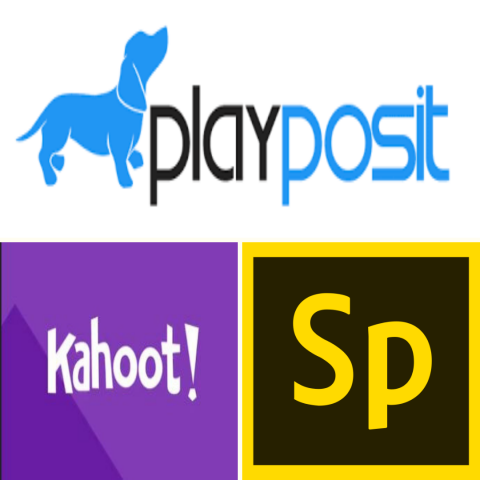Using digital technology tools to teach about Israel

Recently, I had the opportunity to work with a cohort of Qushiyot: Israel Education Fellowship participants. During the workshop Qushiyot fellows explored three technology tools that can be used within their classroom teaching of Israel.
Israel is 6,000 miles away from New York. As educators it can become hard and frustrating to teach about a place that students may not have visited or do not have a connection with. Videos are a great resource for educators to expose their students to the culture and geography of the country they are teaching. Playposit is a technology resource that allows the user to take videos from YouTube and other video platforms and embed questions for participants to answer as they are watching the video. This data is collected and a teachers can see how students are understanding the information that is being shared with them. The videos can be assigned for homework and then discussed in class as well.
PlayPosit is a web and Chrome-based interactive video and assessment tool that lets teachers add interactive elements -- such as questions and pauses -- to streaming video content from popular sites such as YouTube and Vimeo, among a number of others. Throughout any video lesson, students can rewind to hear any part of the video again. However, they can't fast-forward to skip ahead of what they've already watched. Through a dashboard, teachers can get data about students' use and performance within the embedded assessment items.
When teaching about Israel, teachers may want to create media and graphics. Adobe Spark is an easy tool for teachers and students to use to create images, videos, and even websites. You can assign a specific topic to students and they can use Adobe Spark to create digital images to be used for a presentation, video creation tools allow you to create videos about the subject you are teaching, as well as a website creation tool to create a website about the historical topic you are discussing which can house additional resources and information.
Adobe Spark is a design and media-creation platform that's best used on the web but is also available on iOS and in beta for Android. The platform features three project types: Post (social graphics), Page (web stories), and Video (animated videos). You can start a Post or Video by choosing a template or starting from scratch. There's a selection of school-specific templates for Post projects such as flyers, explainer/how-to, and report; several Video templates also are great for the classroom.
After students have mastered the topic you are teaching you may want to test their knowledge using an assessment tool like Kahoot. You can also use Kahoot as a pre-assessment tool to be able to learn what your students prior knowledge of a specific topic. Kahoots can also be created by students on specific topics and incorporate images and videos to be used as an end of unit wrap up.
Kahoot!, a free student-response tool for all platforms, allows teachers to run game-like multiple-choice answer quizzes. Teachers can either create their own quizzes or find, use, and/or remix public quizzes. Questions, along with answer choices, are projected onto a classroom screen while students submit responses using an internet-connected device (computer, tablet, or phone). Questions and polls can contain images and video to help further appeal to all learners. Classic mode and Team mode take place in real time, but Challenge mode enables students to take quizzes within a set time frame, such as for homework. Playing a game of Kahoot! doesn't involve an account, only a game PIN from the main screen and a name (which can be auto generated if you choose).
For more resources and information visit: http://bit.ly/2QsuH0K
Monica Brandwein is an Educational Technology Consultant for DigitalJLearning and The Jewish Education Project.


